 2006 Mitsubishi i (HA1W) Dimensions, Size & Specs
2006 Mitsubishi i (HA1W) Dimensions, Size & SpecsMeasurements of the 2006 Mitsubishi i, engineered for optimal performance and comfort
| Dimensions | |
|---|---|
| Length: | 3395 mm133.7 in11.1 ft |
| Width: | 1475 mm58.1 in4.8 ft |
| Height: | 1600 mm63.0 in5.2 ft |
| Weight Specifications | |
| Curb Weight: | 900 kg1984 lbs |
| Tire Specifications | |
| Tire Size: |
|
The Mitsubishi i (HA1W) generation, produced from 2005 to 2013 and launched in the 2006 model year, is a uniquely designed city hatchback known for its compact size and efficient use of space. This vehicle is tailored to urban environments with its concise length of just 3395 mm (133.5 inches), making it very maneuverable in tight city streets and parking spots. With a width of 1475 mm (58.1 inches), the i remains narrow enough for easy navigation through congested traffic, while its relatively tall stance at 1600 mm (63.0 inches) provides a roomy cabin experience within a small footprint. The curb weight is a lightweight 900 kilograms (approximately 1984 lbs), contributing to agile handling and improved fuel efficiency. This lightweight nature, combined with modest dimensions, makes the Mitsubishi i ideal for city dwellers who need a practical yet easy-to-drive vehicle. It rides on tires sized 145/65 R15, balancing ride comfort and efficiency. Overall, the Mitsubishi i (HA1W) is a smart compact hatchback offering efficient urban mobility, compact dimensions, and a surprisingly spacious interior for its category.
Discover the standout features that make the 2006 Mitsubishi i a leader in its class
Have a question? Please check our knowledgebase first.
The Mitsubishi i (HA1W) generation, produced between 2005 and 2013, is a compact hatchback with very compact dimensions designed for urban maneuverability. It has a length of 3395 mm (133.7 inches), a width of 1475 mm (58.1 inches), and a height of 1600 mm (63 inches). These dimensions make it one of the smallest modern cars, optimized for tight city environments and easy parking. With its narrow width and tall height, it provides a surprisingly spacious interior relative to its footprint.
The Mitsubishi i (HA1W) has a width of 1475 mm (58.1 inches), which is significantly narrower than many standard compact cars that typically measure around 1700 mm (67 inches) in width or more. This narrow width contributes to its excellent ability to navigate narrow streets and tight parking spaces, typical in urban environments. However, the slim profile might affect shoulder-room inside compared to wider vehicles. Still, the tall height helps compensate for interior space efficiency.
The Mitsubishi i (HA1W) measures 1600 mm (63 inches) in height. This is quite tall for a car of its overall compact dimensions, which directly benefits interior headroom and visibility. The elevated roofline allows for a more upright seating position, offering enhanced comfort for passengers and an airy cabin feel despite the car’s otherwise small footprint. The higher roof also improves ease of entry and exit compared to lower hatchbacks.
The curb weight of the Mitsubishi i (HA1W) is approximately 900 kg (1984 lbs). This lightweight construction significantly aids fuel efficiency and nimble handling, essential qualities for a city car. The lighter weight allows the small engine to perform adequately without excessive fuel consumption, contributing to an economical driving experience. Additionally, the reduced weight may improve quick acceleration off the line and ease of parking maneuvers.
Yes, the Mitsubishi i (HA1W) fits comfortably into a standard garage. With a length of 3395 mm (133.7 inches), width of 1475 mm (58.1 inches), and height of 1600 mm (63 inches), it is significantly smaller than typical garage interior dimensions, which generally accommodate vehicles up to about 6 meters (236 inches) long and 2.4 meters (95 inches) wide. Its smaller size makes it highly convenient for city dwellers who may have compact garage spaces.
The Mitsubishi i (HA1W) comes equipped with 145/65 R15 tires, which are relatively narrow and mounted on 15-inch rims. These tires are designed to balance sufficient grip with low rolling resistance, enhancing fuel efficiency and providing a comfortable ride. The narrower width (145 mm) contributes to reduced friction on the road, aiding better mileage, though it might slightly limit cornering stability compared to wider tires. Overall, they complement the car’s urban focus, optimizing smooth and economical city driving.
The Mitsubishi i (HA1W) generation, introduced in 2005, does not have a direct predecessor with the 'i' name, as it was a new model line inspired by kei car concepts but sold globally. Instead, it evolved from smaller kei car design principles but with international market adaptation. Compared to typical kei cars, it is slightly larger to accommodate export markets. Its dimensions focus on maximizing interior space within minimal external size, marking a shift from traditional designs that prioritized ultra-compact external dimensions over interior livability.
When compared to other urban hatchbacks like the Toyota iQ or Smart ForTwo, the Mitsubishi i (HA1W) tends to be slightly longer and taller but narrower. For example, the Mitsubishi i’s length of 3395 mm (133.7 inches) exceeds the Smart ForTwo’s approximate 2695 mm (106 inches) and closely competes with the Toyota iQ’s 3120 mm (123 inches). Its taller height (1600 mm/63 inches) offers more vertical space, emphasizing comfort. The narrow width stitches the balance between maneuverability and interior space, making it well-suited as a city car alternative.
The Mitsubishi i (HA1W) typically seats four passengers comfortably due to its smart packaging, despite its small overall size. The interior design maximizes usable space with an efficient layout and elevated roofline. Cargo capacity is modest, as expected in a kei-inspired city hatchback, with rear seats that can fold down to increase luggage space as needed. This makes it practical for daily errands and small family use, prioritizing urban utility over large cargo volume.
The Mitsubishi i (HA1W) is notable for blending kei car compactness with features attractive for global markets. It features a rear-engine, rear-wheel-drive layout, unusual for hatchbacks, which enhances interior space and driving dynamics. Its small, city-friendly dimensions, combined with a lightweight build and efficient engine options, yield excellent fuel economy and maneuverability. The distinctive tall, narrow profile maximizes cabin space. Its production span from 2005 to 2013 reflects an extended lifecycle with consistent appeal as an urban mobility solution.
Discover similar sized cars.
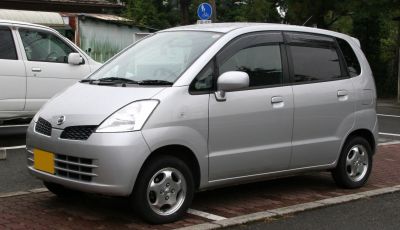
| Production: | 2001-2006 |
|---|---|
| Model Year: | 2001 |
| Length: | 3395 mm133.7 in |
| Width: | 1475 mm58.1 in |
| Height: | 1590-1600 mm62.6-63.0 in |
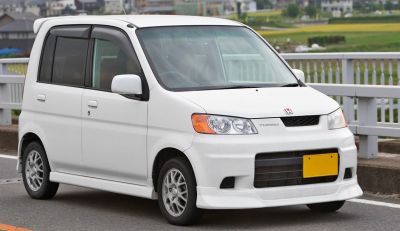
| Production: | 1998-2003 |
|---|---|
| Model Year: | 1998 |
| Length: | 3395 mm133.7 in |
| Width: | 1475 mm58.1 in |
| Height: | 1605 mm63.2 in |
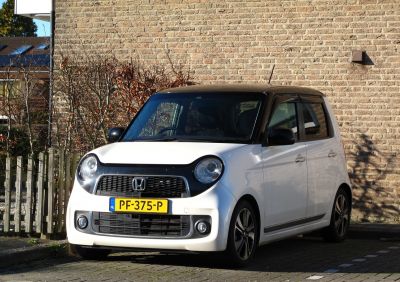
| Production: | 2012-2020 |
|---|---|
| Model Year: | 2012 |
| Length: | 3395 mm133.7 in |
| Width: | 1475 mm58.1 in |
| Height: | 1545-1630 mm60.8-64.2 in |
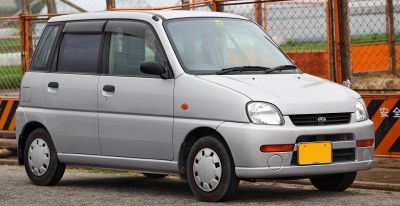
| Production: | 1998-2009 |
|---|---|
| Model Year: | 1998 |
| Length: | 3395 mm133.7 in |
| Width: | 1475 mm58.1 in |
| Height: | 1580 mm62.2 in |
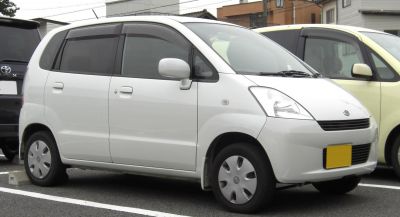
| Production: | 2001-2006 |
|---|---|
| Model Year: | 2001 |
| Length: | 3395 mm133.7 in |
| Width: | 1475 mm58.1 in |
| Height: | 1590 mm62.6 in |
